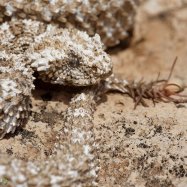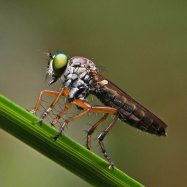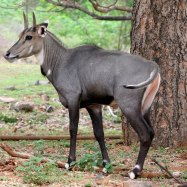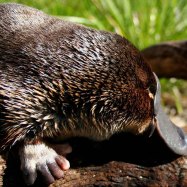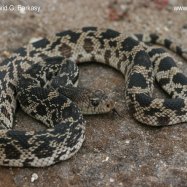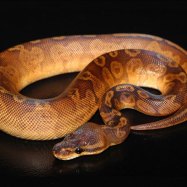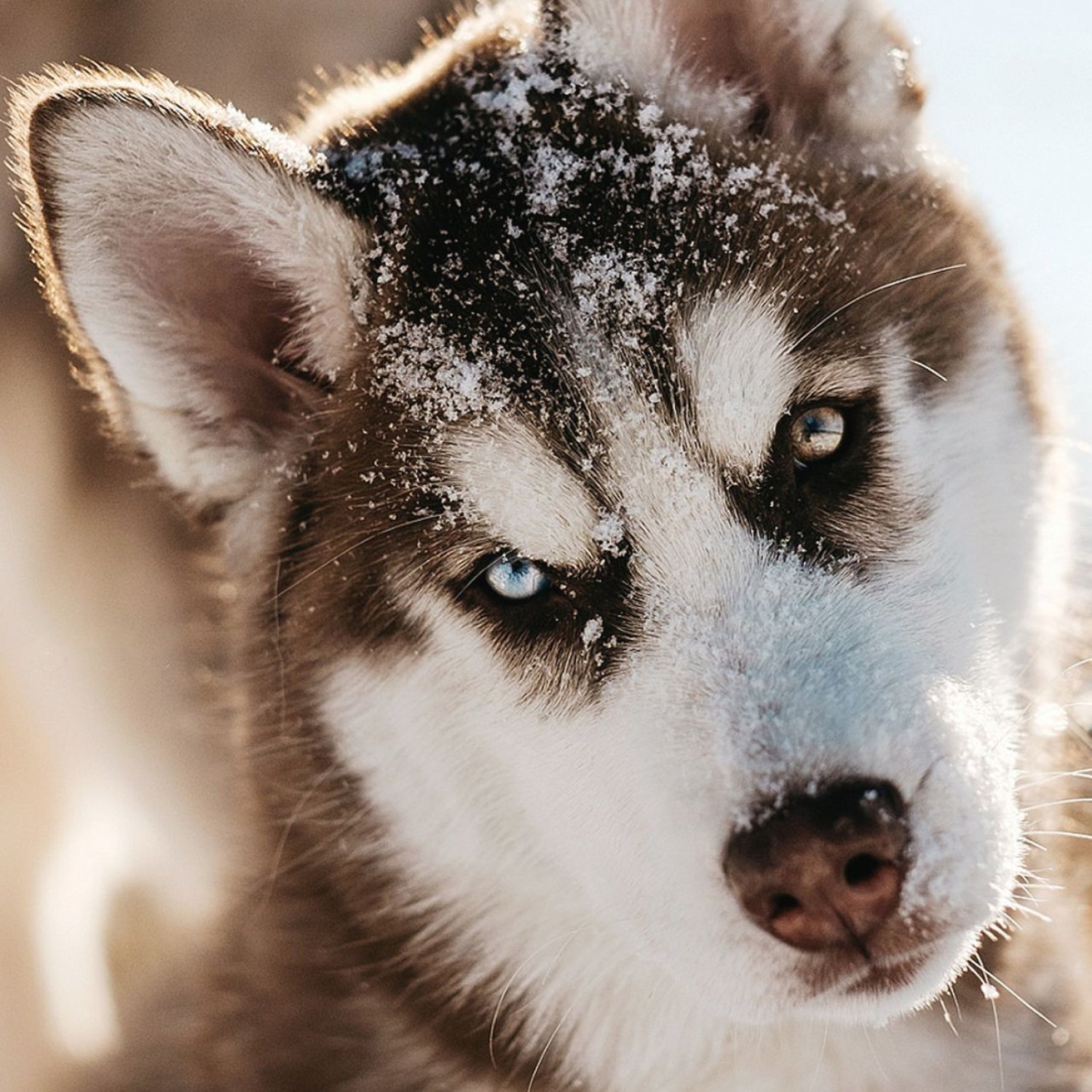
Siberian Husky
20-24 inches (50-60 cm)
The Siberian Husky is a beautiful and popular breed of dog that hails from the Northern regions. Known for their thick fur and striking blue eyes, these medium-sized and well-muscled canines make great companions and working dogs. With their friendly nature and high energy levels, they are best suited for active families who can provide them with plenty of exercise and mental stimulation.
Animal Details Summary:
Common Name: Siberian Husky
Kingdom: Animalia
Habitat: Arctic regions
The Mighty and Majestic Siberian Husky: A Nature's Masterpiece
When you think of Siberia, Russia, you might picture a harsh and cold landscape, full of vast frozen tundras and howling winds. But amidst this frozen terrain, there exists a creature that is as tough and resilient as the land it calls home - the Siberian Husky. With its striking appearance and impressive abilities, the Siberian Husky has captured the hearts of many dog lovers around the world. In this article, we will dig deeper into the world of this magnificent breed and uncover the fascinating details that make it a true wonder of nature Siberian Husky.An Arctic Origin
The Siberian Husky, also known as Canis lupus familiaris, belongs to the Canidae family and is a domesticated subspecies of the Gray Wolf. Its ancestors were originally bred by the Chukchi people of Eastern Siberia for their sledding capabilities and companionship. Though they have been domesticated, these beautiful canines still possess some of the characteristics of their wild ancestors, making them fit for survival in harsh conditions.Characteristic Features
One of the most striking features of the Siberian Husky is its striking coat. As the breed originated in a cold climate, they have a thick double coat, which helps them withstand sub-zero temperatures. The undercoat is thick and soft, while the topcoat is longer and coarser. This dual-layered coat comes in a variety of colors, including black, white, gray, red, and sable. The distinctive markings and colors on a Husky's coat make each individual dog unique and truly mesmerizing to look at.Apart from their coat, Huskies are also known for their distinctive blue, brown, or bi-colored eyes Sand Dollar. This feature is considered a rarity among dog breeds and is what gives them their alluring and expressive gaze. One of the most notable characteristics of the Siberian Husky is their wolf-like appearance. With their pointy ears, elegant posture, and long, bushy tails, they possess a regal aura that is hard to resist.
Physical Attributes
The Siberian Husky is a medium-sized breed, with an average height of 20-24 inches (50-60 cm) and a weight range of 35-60 pounds (16-27 kg). They have a well-muscled body, built for endurance and strength. Their compact and athletic build enables them to traverse long distances and tough terrains with ease. Their paws have thick pads and webbed toes, which help them navigate through snowy and icy landscapes without slipping.Apart from their physical attributes, Huskies are also known for their incredible temperament. They are intelligent, friendly, and affectionate dogs, making them excellent family pets. They also have a playful and energetic nature, making them ideal companions for active individuals and families. However, due to their history as working dogs, they have high energy levels and require regular exercise and mental stimulation to stay happy and healthy.
A Natural Carnivore
Just like their wild ancestors, Siberian Huskies are carnivorous by nature. Their primary food source is meat, and they thrive on a diet that is rich in protein. In their natural habitat, they would hunt for small prey like rabbits, squirrels, and rodents to fulfill their nutritional needs. As pets, it is essential to provide them with a balanced diet that caters to their dietary needs and fulfills their energy requirements.A Habitat in the Arctic
It comes as no surprise that these tough and resilient creatures inhabit the coldest regions of the world. Their natural habitat is the Arctic and subarctic regions, where temperatures can drop to as low as -50 degrees Celsius. In these harsh environments, Huskies have adapted to survive and thrive in the frozen landscape. Their thick double coat, webbed feet, and tough demeanor make them well-equipped for their harsh surroundings.Distribution and Country of Origin
Siberian Huskies are native to Siberia, Russia, and are also found in other Northern regions like Alaska and Canada. They were first bred by the Chukchi people of Eastern Siberia, who used them for transportation, hunting, and as guardians. These dogs were highly valued by the Chukchi people and were considered an integral part of their way of life. Today, Huskies are found worldwide and have become popular as pets, show dogs, and sled dogs.The NLP Connection
While Siberian Huskies are undoubtedly beautiful, their intelligence and physical abilities also make them ideal candidates for working with advanced technologies like Natural Language Processing (NLP). NLP is a branch of Artificial Intelligence (AI) that focuses on enabling computers to understand, interpret, and manipulate human language. With their impressive cognitive abilities and capacity to communicate with humans, Huskies can play an important role in advancing this field.Conclusion
In conclusion, the Siberian Husky is much more than a gorgeous dog breed - it is a true marvel of nature. From its stunning appearance to its resilience in harsh conditions, and its intelligence and friendly temperament, this breed has captured the hearts of many. As a symbol of strength and endurance, the Husky continues to amaze and inspire us, showing us what it means to adapt and overcome. So the next time you see a Siberian Husky, take a moment to appreciate its magnificence and the wonders of nature that have brought this breed to life.

Siberian Husky
Animal Details Siberian Husky - Scientific Name: Canis lupus familiaris
- Category: Animals S
- Scientific Name: Canis lupus familiaris
- Common Name: Siberian Husky
- Kingdom: Animalia
- Phylum: Chordata
- Class: Mammalia
- Order: Carnivora
- Family: Canidae
- Habitat: Arctic regions
- Feeding Method: Carnivorous
- Geographical Distribution: Siberia, Russia
- Country of Origin: Siberia, Russia
- Location: Northern regions
- Animal Coloration: Various colors, including black, white, gray, red, and sable
- Body Shape: Medium-sized, well-muscled
- Length: 20-24 inches (50-60 cm)
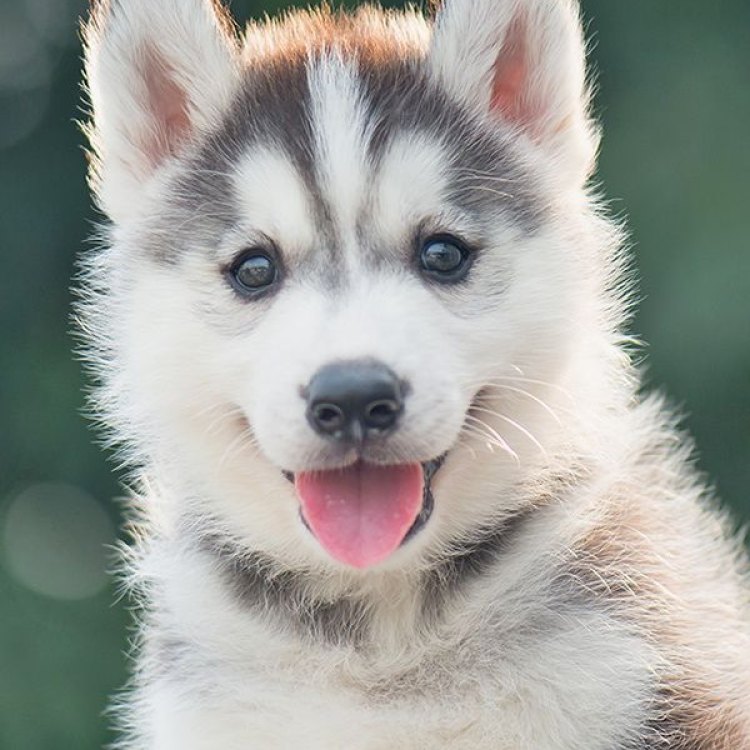
Siberian Husky
- Adult Size: Medium to large
- Average Lifespan: 12-15 years
- Reproduction: Sexual
- Reproductive Behavior: Breeding season occurs once a year
- Sound or Call: Howling
- Migration Pattern: No defined migration pattern
- Social Groups: Pack
- Behavior: Friendly, intelligent, energetic
- Threats: None (domesticated)
- Conservation Status: Not applicable (domesticated)
- Impact on Ecosystem: No significant impact
- Human Use: Sled dogs, companionship
- Distinctive Features: Thick double coat, blue or multi-colored eyes
- Interesting Facts: Known for their endurance and ability to withstand cold temperatures
- Predator: No natural predators
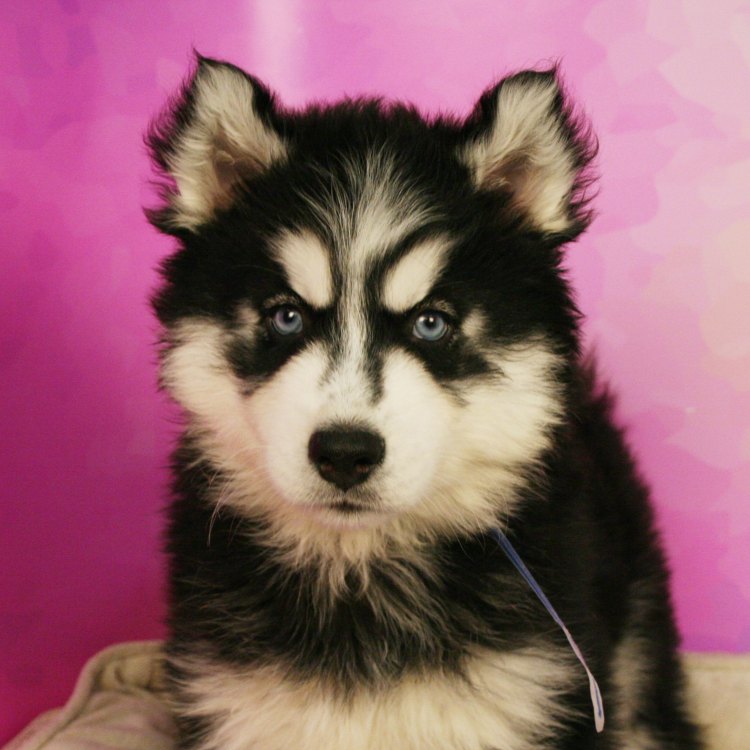
Canis lupus familiaris
The Beautiful and Agile Siberian Husky: A Loyal Companion and Mighty Sled Dog
From the snowy tundras of Siberia to our homes and hearts, the Siberian Husky has captured the attention and admiration of people all over the world. These majestic creatures are known for their stunning good looks, intelligence, and impressive endurance. But there is much more to them than meets the eye. In this article, we will delve into the unique features and fascinating facts about this incredible breed, from their distinctive traits to their impact on the ecosystem PeaceOfAnimals.Com.The Siberian Husky is a medium to large-sized dog breed, with adult males reaching a height of 21-23 inches and weighing between 45-60 pounds, while females are slightly smaller, standing at 20-22 inches tall and weighing 35-50 pounds. They have a lifespan of 12-15 years, making them a long-term commitment for any potential owner.
One aspect that sets Siberian Huskies apart from other breeds is their reproductive behavior. They are sexual creatures with a breeding season that occurs once a year, typically during the winter months. This is due to their origins in the harsh Siberian climate, where they were bred to survive and thrive in freezing temperatures.
The call of the wild echoes in the Siberian Husky's genetic makeup, and they express it through their distinct howling. Unlike other breeds, they do not bark, but rather communicate through their hauntingly beautiful howls. This behavior can be traced back to their days as sled dogs, where they relied on howling to communicate with their pack and musher (the driver of the sled).
Despite their strong connection to the wild, Siberian Huskies do not have a defined migration pattern Sarus Crane. Unlike wolves, who travel in search of food and resources, these dogs are content with staying in one place. This may be due to their domestication over thousands of years, which has led them to adapt to a more stationary lifestyle with humans.
The social structure of Siberian Huskies is another distinct characteristic that sets them apart from other dog breeds. They are pack animals and have a strong bond with their family members. This pack behavior is evident in their close relationships with other dogs and their human owners. As pets, they are known to be friendly, loving, and sociable, making them excellent companions for families with children. However, this also means they crave attention and can suffer from separation anxiety if left alone for extended periods.
Siberian Huskies are highly intelligent and energetic animals, which is why they are often used as sled dogs in colder climates. But their strong working ability and endurance do not mean they are not suitable as pets. With proper training and exercise, they can thrive in a domestic setting. These dogs need an outlet for their physical and mental energy, which can be channeled through activities like running, hiking, or playing fetch.
One of the most remarkable things about Siberian Huskies is that they do not have any natural predators. This is due to their size and strength, as well as their natural instincts and ability to survive in harsh conditions. However, this does not mean they are immune to threats. Like any other domesticated animal, Siberian Huskies are vulnerable to abuse and neglect at the hands of humans. It is crucial for owners to educate themselves on proper care and training of these animals and to provide them with a safe and loving environment.
The conservation status of Siberian Huskies is not applicable as they are considered domesticated animals. But that does not mean they have no impact on the ecosystem. In their native habitat, they were an essential part of the lives of the indigenous people. Their thick double coat and thick paw pads allowed them to withstand extreme temperatures, making them valuable companions for hunting, transportation, and even as babysitters for children.
In modern times, Siberian Huskies are mainly used as sled dogs and for companionship. And while they may no longer play a significant role in the ecosystem, they have left a lasting impression on humans. These dogs have become an integral part of many cultures and have even been immortalized in myths and legends, showcasing their importance in our history.
The distinctive features of Siberian Huskies are what make them stand out from other breeds. Their thick double coat, with a soft undercoat and a longer topcoat, provides insulation and protection from the cold. This also means they shed heavily, known as "blowing their coats," during shedding season.
One of the most eye-catching features of Siberian Huskies is their blue or multi-colored eyes. This is a result of a genetic mutation called heterochromia, where each eye has a different color. This unique trait adds to their charm and has even inspired the development of plush toys and other merchandise featuring huskies with mismatched eyes.
Apart from their physical features, Siberian Huskies are also known for their endurance and ability to withstand cold temperatures. In fact, they were bred to run for miles in the snow and ice, pulling sleds and carrying heavy loads. Their thick coat and strong legs make them well-suited for these tasks, and they have been known to compete in long-distance races and expeditions in freezing temperatures.
Humans have also found numerous uses for Siberian Huskies throughout history. From being valuable working companions in the past to serving as therapy dogs and search-and-rescue dogs today, they have proved their versatility and adaptability. These dogs also excel in sports such as agility, obedience, and skijoring (pulling a person on skis).
For many people, owning a Siberian Husky is a dream come true. But it's crucial to note that these dogs are not for everyone. They require a lot of exercise, attention, and proper training. Without these, they can become destructive, restless, and even aggressive. They are also known to have a high prey drive, making them unsuitable for homes with small animals, such as cats or rabbits.
In conclusion, the Siberian Husky is a beautiful and agile breed that has captured our hearts and imaginations. Their distinctive features, impressive abilities, and fascinating history make them a cherished part of our lives. Whether as a companion or a working dog, they have proven to be loyal, loving, and hardworking. With proper care and attention, these magnificent animals will continue to reign supreme in our hearts and homes for years to come.
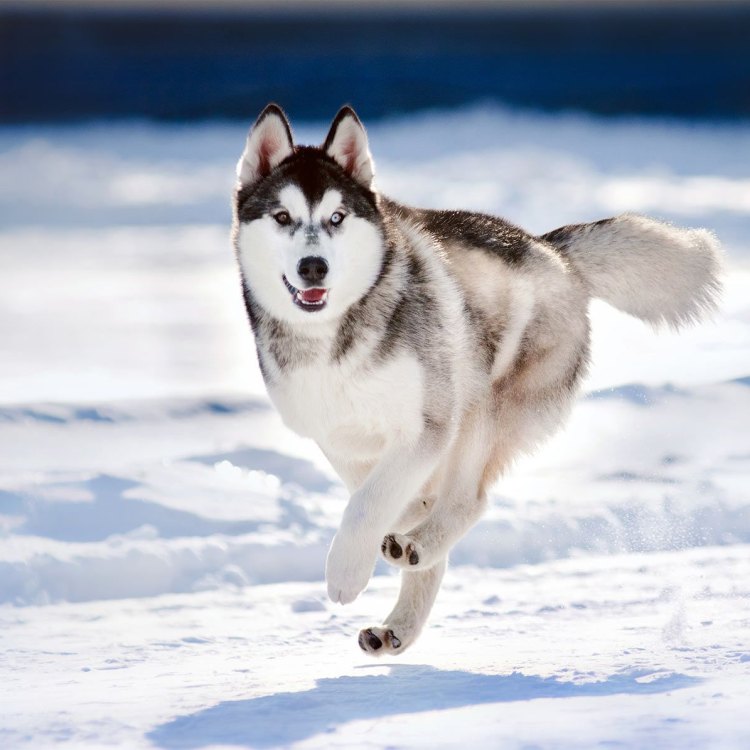
The Mighty and Majestic Siberian Husky: A Nature's Masterpiece
Disclaimer: The content provided is for informational purposes only. We cannot guarantee the accuracy of the information on this page 100%. All information provided here may change without prior notice.



